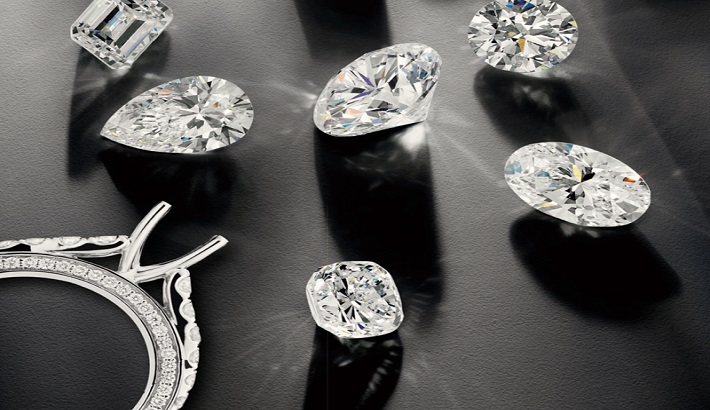Introduction
Have you ever wondered how diamonds, the symbol of eternal love and luxury, could be made more accessible, ethical, and environmentally friendly? What if you could possess a dazzling gem that combines the allure of natural diamonds with the innovation of modern technology? Welcome to the world of lab grown diamond jewellery, where science meets elegance, and sustainability enhances desirability. Let’s explore the fascinating journey of these engineered wonders, their benefits, and why they are becoming the preferred choice for the discerning jewelry enthusiast.
What Are Lab-Grown Diamonds?
Lab-grown diamonds, also known as synthetic or cultured diamonds, are created in controlled environments using advanced technological processes that mimic the natural formation of diamonds. These diamonds possess the same physical, chemical, and optical properties as their natural counterparts. There are two primary methods to create lab-grown diamonds:
- High Pressure High Temperature (HPHT): This method involves exposing carbon to extreme pressure and temperature, replicating the natural conditions in which diamonds form beneath the Earth’s surface.
- Chemical Vapor Deposition (CVD): This technique involves breaking down carbon-rich gases to deposit diamond layers onto a substrate, allowing for the growth of pure diamond crystals.
The Advantages of Lab-Grown Diamonds
- Ethical Sourcing: Traditional diamond mining has long been associated with environmental degradation and unethical labor practices. Lab-grown diamonds eliminate these concerns, providing a conflict-free alternative that ensures fair labor practices and reduces ecological impact.
- Environmental Sustainability: Mining natural diamonds requires extensive land disturbance and resource consumption. In contrast, lab-grown diamonds are produced with significantly lower environmental footprints, conserving water and energy while minimizing carbon emissions.
- Affordability: Lab-grown diamonds typically cost 20-40% less than natural diamonds of equivalent quality. This cost efficiency allows consumers to purchase larger or higher-quality stones without breaking the bank.
- Quality and Variety: With the ability to control the growth environment, lab-grown diamonds often exhibit fewer inclusions and impurities. Moreover, they are available in a variety of colors and can be customized to specific preferences.
The Science Behind Lab-Grown Diamonds
Creating a lab-grown diamond involves a meticulous scientific process. In HPHT, a small diamond seed is placed in a carbon source under high pressure and temperature, prompting carbon atoms to crystallize around the seed. In CVD, carbon gases are introduced into a chamber, where they break down and deposit carbon atoms onto a diamond seed, layer by layer.
This scientific precision not only replicates but also refines nature’s process, resulting in diamonds that are virtually indistinguishable from natural ones. Advanced equipment and gemological testing are required to differentiate between the two.
Consumer Perception and Market Trends
The market for lab-grown diamonds has seen exponential growth, driven by increasing consumer awareness and demand for sustainable products. Millennials and Gen Z, in particular, prioritize ethical consumption and environmental responsibility, making lab-grown diamonds a popular choice among younger demographics.
According to market research, the global lab-grown diamond market is projected to reach billions of dollars by the next decade. Jewelers and brands are expanding their collections to include lab-grown options, further legitimizing and popularizing these gems.
Lab-Grown Diamonds in Jewelry Design
From engagement rings to everyday wear, lab diamonds are making a significant impact in the jewelry industry. Designers appreciate the versatility and ethical appeal of these diamonds, incorporating them into innovative and stunning pieces.
Engagement Rings: Lab-grown diamonds are perfect for engagement rings, offering a blend of beauty, sustainability, and affordability. Couples can opt for bespoke designs with larger stones or intricate settings without the premium price tag.
Fashion Jewelry: Lab-grown diamonds are also popular in fashion jewelry, allowing for statement pieces that are both chic and conscientious. From necklaces to earrings, these diamonds add a touch of elegance to any outfit.
Fine Jewelry: High-end designers are increasingly using lab-grown diamonds in fine jewelry collections, combining traditional craftsmanship with modern ethics. These pieces often feature exquisite designs that highlight the exceptional quality of lab-grown diamonds.
Conclusion
As we embrace a future where luxury meets responsibility, lab-grown diamond jewelry stands at the forefront of this transformation. Offering ethical sourcing, environmental sustainability, affordability, and unparalleled quality, lab-grown diamonds are not just a trend but a testament to innovation and conscious consumerism. Will you join the movement towards a brighter, more brilliant future?
In the world of diamonds, it’s no longer a choice between beauty and ethics. With lab-grown diamonds, you can have both. The next time you consider a dazzling addition to your jewelry collection, think beyond the traditional and explore the brilliance of lab-grown diamonds. After all, why compromise when you can shine responsibly?







More Stories
The Anatomy of Pawn Shops: Insights into Their Functionality and Services
Understanding the Differences: IGI vs GIA Lab Grown Diamonds
HPHT vs. CVD Diamonds: Understanding the Differences